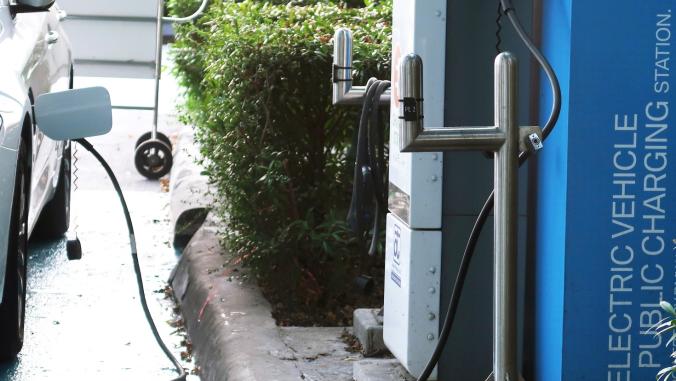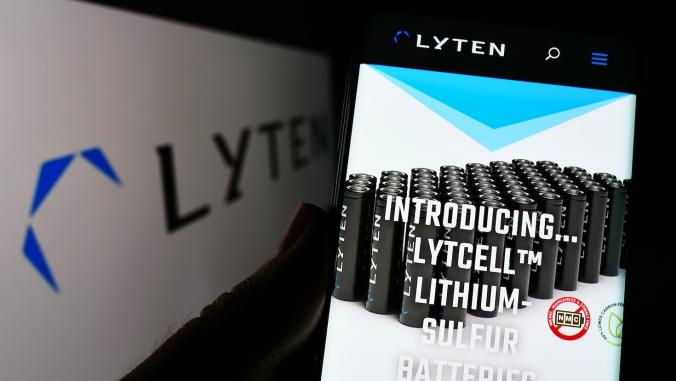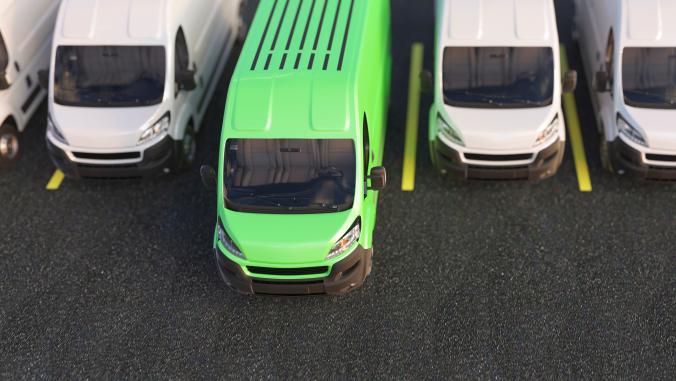Electric buses and trucks charge ahead
China is ahead with electrification, but the year ahead could be a tipping point elsewhere.

Adapted from State of Green Business 2019, published by GreenBiz in partnership with Trucost, part of S&P Global.
In Shenzhen, China, a sprawling metropolis of over 12 million people, more than 16,000 city buses run on batteries, moving commuters to jobs and residents to shops using electricity instead of diesel. The city’s 100 percent electric bus fleet, manufactured by Chinese bus maker BYD, is unusual today, but it’s an indicator of what’s to come. Transit and school buses are quickly electrifying in cities around the globe, from Krakow, Poland, to Park City, Utah. Other types of commercial, industrial and institutional trucks, such as delivery vans and cargo-handling vehicles, aren’t far behind as battery costs continue to drop and adoption begins.
At some point, fleet vehicles will electrify more quickly than passenger vehicles. By 2040, Bloomberg New Energy Finance (BNEF) predicts that fully 80 percent of the world’s city bus fleets will be electric. That same year, only a third of the world’s passenger vehicles are predicted to be electric.
Today, cities in China, Europe and the United States are plugging into electric transit and school buses as part of efforts to reduce local air pollution, meet carbon emissions reductions targets and potentially save money on fuel costs. There are also the green optics: It’s hard to argue with eliminating diesel fumes from a bus packed with school kids.
Yet last year, there were only a few hundred electric transit buses in the United States, out of 70,000 municipal buses. That’s primarily because most battery-powered buses are more expensive to buy than their diesel-powered counterparts. To help with the couple-hundred-thousand-dollar price gap per vehicle, American cities have turned to state and federal incentives. It’s not surprising, then, that California — with its ample cap-and-trade and gas tax funds — has the most electric transit buses in the United States. The Golden State also recently added a stick to its carrots: In late 2018, it became the first U.S. state to mandate that transit agencies must stop buying fossil-fuel-powered by buses starting in 2029.
At the same time, China, with its aggressive government and considerable air pollution, is by far the world’s e-bus leader. Ninety-nine percent of the electric buses driving on the planet’s roads last year were in the world’s most populous country, according to BNEF. However, these are signs of an emerging market. As the cost of lithium-ion batteries continues to drop, and the e-bus and e-truck markets continue to expand, these vehicles eventually will become cost-competitive with diesel-powered vehicles the same way that electric passenger vehicles are rapidly approaching that point.At some point, fleet vehicles will electrify more quickly than passenger vehicles.
At that tipping point, battery-powered fleets for certain applications will become the de facto choice. Why? Because they’ll be able to save cities, transit agencies and companies considerable money on fuel costs and will be simultaneously cleaner and cheaper to operate. That spark will "annihilate the diesel bus," as Ryan Popple, CEO of electric bus maker Proterra, put it.
In the meantime, how these electric vehicles are used will be an important factor to determine how cost-effective they’ll be. Delivery vans — with their predictable routes, central depots and average distance traveled — are a natural fit for battery power. But over-the-road semi trucks that haul goods between cities and across state lines? Not so much.
A lot of challenges remain for electrifying truck and bus fleets. Most major original equipment manufacturers have yet to invest heavily in building out large volumes of electric bus and truck models. For example, Proterra, one of the leading electric transit bus makers, has delivered only several hundred buses to date.
The early stage of the market has led fleet operators to buy electric trucks from small, high-risk startups, and some fleet leaders have even played a major role in designing vehicles. The delivery gorillas, FedEx and UPS, have worked with a wide array of small suppliers such as Chanje, Thor Trucks, Workhorse and Tesla. Tesla’s electric truck model, the Semi, likely won’t be commercial for a couple years, although the company already has some big-name customers lined up, including PepsiCo, Albertsons, JB Hunt and Walmart.
Today, the list of corporate EV fleet buyers is slowly growing. The Climate Group’s year-old EV100 program, whose members pledge to convert parts of their fleets to electric by 2030, has 31 names, including IKEA Group and Baidu. The interest from original equipment manufacturers is starting to grow, too. Proterra and German automaker Daimler just started working together on electric school buses. German industrial conglomerate Siemens is beginning to experiment with electric trucks. Meanwhile, diesel engine powerhouse Cummins unveiled an electric powertrain last year.
Yet there are still technical hurdles to overcome. The depots needed to charge a fleet of EV transit buses or delivery vehicles require considerable investment and electricity demand compared to passenger EV chargers. That can add considerable costs to a fleet manager’s decision to convert to electric. That challenge, too, is making some progress. For example, last year, California regulators approved close to $1 billion for electric vehicle charging projects run by the state’s utilities. A good portion of these funds will go toward preparing commercial and industrial zones — such as ports and bus depots — for future charging networks.How these electric vehicles are used will be an important factor to determine how cost-effective they’ll be.
Companies are also hard at work on innovating new ways to charge buses and trucks, including battery-swap stations and wireless charging technologies. In London, UPS worked with partners last year to develop a system to dynamically charge its delivery fleet using smart software and smart-grid technology.
In the immediate years, when electric buses and trucks remain more expensive than diesel ones, more innovation will be needed around how to finance these vehicles. Leasing, as opposed to buying, bus batteries could become more popular. Down the road, fleet operators could work with utilities to pay for fleet vehicle batteries through monthly energy bills.
Fleet electrification will be a huge market one day, filled with large manufacturers that offer a wide range of models, in addition to companies and cities that commonly operate all-electric fleets. But the environmental effect of electrification will be equally important. The transportation sector stubbornly has seen its GHG emissions rise in many places in recent years.
Electrifying commercial and industrial transportation is crucial to helping curb those emissions. Fleet electrification can help alleviate local air pollution, particularly in economically disadvantaged communities often found near ports, bus depots and industrial warehouses. Drivers and riders of these vehicles likewise will benefit from the elimination of diesel exhaust.
Today, it’s clear that city and school buses will be the pioneers of this sector. While Chinese cities are already moving down this road, 2019 will prove a turning point for American and European cities to assess their transit bus fleets and move toward battery power. Fleet managers at companies and other organizations will follow closely behind.
Key players to watch
BYD — the world’s largest electric vehicle maker in terms of volumes of vehicles sold is based in Shenzhen, China, with offices and a factory in California.
Chanje — the startup, formed out of the ashes of the now-defunct Smith Electric Vehicles, builds electric vans for companies such as FedEx and Ryder.
EVgo — the company is building out a network of fast chargers across the United States for fleets, cities and consumers.
North American Council for Freight Efficiency (NACFE) — the independent research organization focuses on helping the trucking industry navigate energy efficiency and clean energy technology choices.
Proterra — the rare venture-capital-backed startup focused on the electric bus market has unveiled an investment from German automaker Daimler and a deal to partner on making electric school buses.




